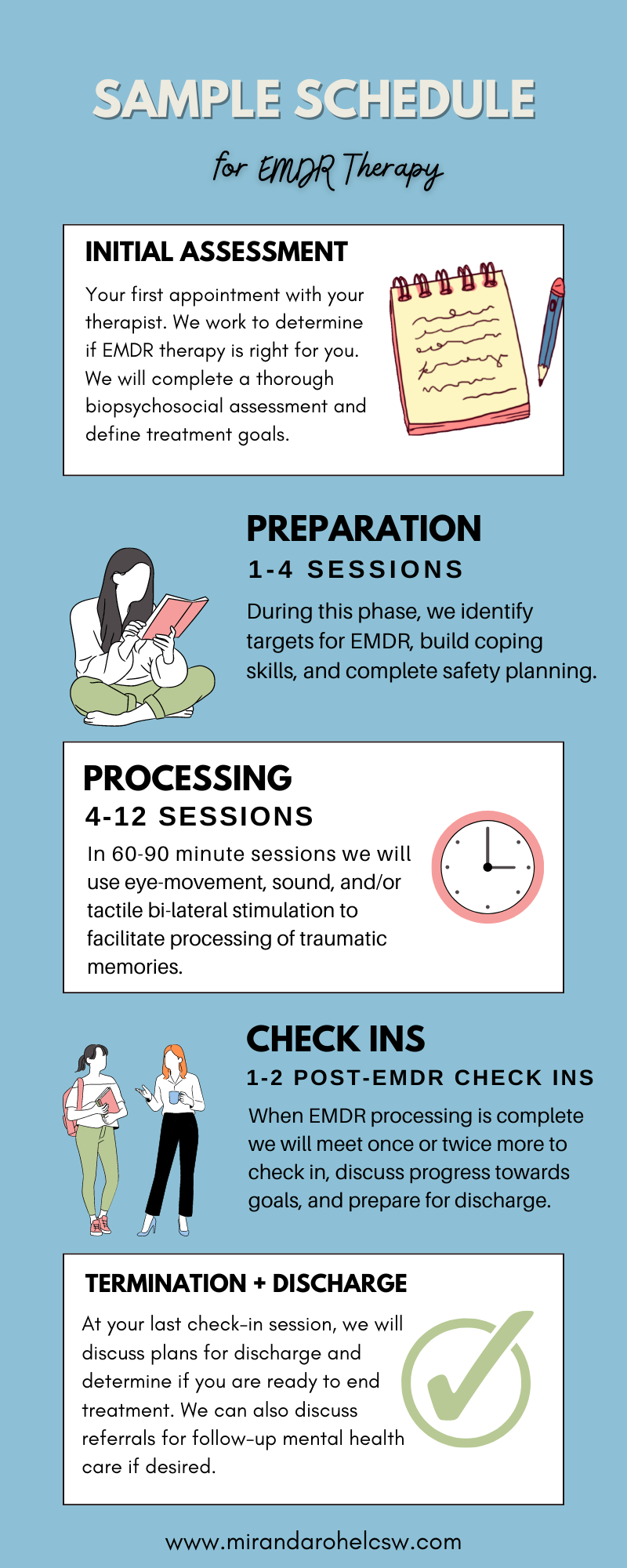EMDR Therapy
(Eye-Movement Desensitization and Reprocessing Therapy)
EMDR is a powerful therapeutic technique that uses bi-lateral stimulation to facilitate the reprocessing of traumatic memories.
Originally developed for the treatment of PTSD, EMDR therapy has since been shown effective in treating conditions including anxiety, panic, depression, and acute trauma.
EMDR therapy aims to heal trauma and reduce or eliminate the physical and psychological responses that result from traumatic experiences.
EMDR Therapy
FAQs
-
Within EMDR therapy BLS refers to the eye movement, sound, or tactile stimulation used to facilitate processing. In our practice, we use a light bar, headphones, a web-based app, and tappers as BLS tools. We will work together to determine which of these options works best for your needs and preferences.
-
During an EMDR session, you may notice a variety of emotions and memories. You may find your mind moving quickly from memory to memory. Some clients report that this feels similar to daydreaming or having their minds wander during meditation. Your provider will stop BLS periodically (typically every 30-60 seconds) to check in with what you are experiencing.
-
No, EMDR therapy is not hypnosis. During EMDR therapy sessions disassociation is not intended and grounding techniques are continuous.
-
EMDR therapy is a powerful process. As such, it can be a very intense experience. We build several coping skills and use screening tools to ensure readiness before we begin processing. We close each session with an exercise to return to a state of calm, but it is possible that your mind will continue to process between sessions. Before processing, we will work together to create a plan for coping with this possibility.
-
Yes, EMDR therapy is available via telehealth. We are able to provide EMDR therapy throughout NYS using our secure platform.
-
Most clients participate in EMDR therapy for 4-12 weeks of processing. However, therapy is an individualized process and response to treatment varies significantly by individual and circumstance. While we can give you an individualized estimate at assessment, please note that individual response to treatment is not always predictable. Some people move very quickly through this treatment, others need more processing time. We will continuously assess throughout treatment and add or reduce sessions as needed. See the sample timeline for an idea of what this might look like. Most clients do find some relief by their fourth session.
*between preparation, processing, and termination please expect to spend at least 8 weeks in treatment.
-
I understand that weekly appointments can be difficult to maintain. For EMDR processing this is important because we are actively working on trauma. We do not want to "stir things up" and leave you to sit with trauma for weeks between sessions. Trauma work can be a difficult and exhausting process, our goal is to get through it quickly and reduce discomfort. We can meet more than once a week if you prefer, but we want to avoid meeting less often than once a week.
*appointments may be less frequent during the preparation and check-in phases.
-
EMDR therapy is not right for everyone. We will not initiate EMDR therapy with clients whom we feel are not appropriate for this treatment. Before EMDR processing we will go through a thorough biopsychosocial assessment. This will help us determine risk factors, support systems and coping skills in place, and contraindications. We will openly discuss your options with you at your assessment.
Learn more about EMDR Therapy
Courtesy of EMDR International Association Learn more at www.emdria.org
